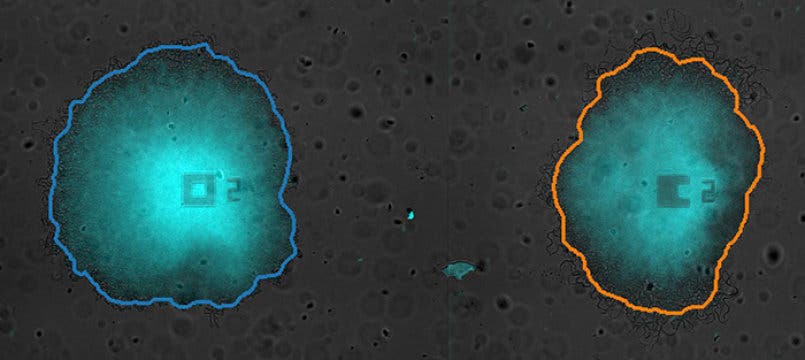When food gets scarce, cooperating so everyone gets his or her fill is a sensible way to go about business. Bacteria seem to have caught on to this fact a lot earlier than we did, and developed time-sharing.

Image credits University of California San Diego.
A team of researchers from the University of California San Diego’s Division of Biological Sciences and Universitat Pompeu Fabra in Spain have found that competing communities of bacteria will enter a timesharing agreement when faced with limited sources of food. Under this strategy, the cultures will alternate feeding times to maximize efficiency and make sure everyone gets enough to eat.
“What’s interesting here is that you have these simple, single-celled bacteria that are tiny and seem to be lonely creatures, but in a community, they start to exhibit very dynamic and complex behaviors you would attribute to more sophisticated organisms or a social network,” said Gürol Süel, associate director of the San Diego Center for Systems Biology and a Howard Hughes Medical Institute — Simons Faculty Scholar at UC San Diego.
“It’s the same timesharing concept used in computer science, vacation homes and a lot of social applications.”
Only that the bacteria seem to be enjoying their time-sharing plan.
Better living through electricity
Back in 2015, Süel and his team found that organized cultures of bacteria (biofilms) pump out electrical signals to communicate with and recruit neighboring bacteria into their little society. Building on that research, they wanted to find out if and how biofilms interact together using these signals. Through laboratory observation and mathematical modeling, they found that these communities will use them to ‘talk’ and cooperate by synchronizing their behavior.
To test their conclusions, they placed two Bacillus subtilis biofilms on the same culture with limited available food. The team writes that the two biofilms became “coupled through electrical signaling,” purposefully synchronizing their growth patterns from in-phase to anti-phase oscillations. In other words, instead of both biofilms going to eat in the morning and sleeping at night, they would take turns so each would have full access to the resource part of the time.
It’s a pretty elegant solution to a reduced nutrient supply. Instead of entering a costly competition, the two cultures simply decided not to step on each other’s toes and time-shared the available food — a strategy we also employ to maximize output in systems with limited resources.
“It is common for living systems to operate in unison, but here we’re showing that working out-of-sync can also provide a biological benefit,” said Jordi Garcia-Ojalvo, professor of systems biology at the Universitat Pompeu Fabra in Barcelona, Spain, and co-author of the study.
It’s interesting to think that these single-celled bacteria could develop the same economic strategy we did, without the benefits of say, brains. Now they just need to develop a health care plan and they’re all set to take over the world.
The paper “Coupling between distant biofilms and emergence of nutrient time-sharing” was published in the journal Science.





